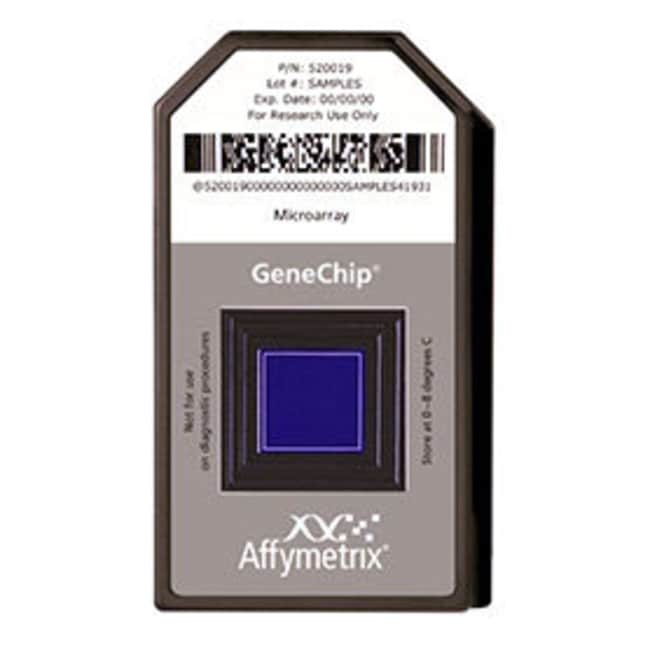Search Thermo Fisher Scientific

Applied Biosystems™
GeneChip™ Human Transcriptome Array 2.0
Designed to empower next-generation expression profiling studies, GeneChip™ Human Transcriptome Array 2.0 provides the ability to go beyond gene-level expressionRead more
| Catalog Number | Number of Arrays |
|---|---|
| 902162 | 10 arrays |
| 902233 | 2 arrays |
Catalog number 902162
Price (USD)
4,250.00
Each
Number of Arrays:
10 arrays
Price (USD)
4,250.00
Each
Designed to empower next-generation expression profiling studies, GeneChip™ Human Transcriptome Array 2.0 provides the ability to go beyond gene-level expression profiling by providing the coverage and accuracy required to accurately detect all known transcript isoforms produced by a gene.
View the data sheet for details on HTA 2.0 content and coverage.
Comprehensive exploration of the transcriptome
Research has shown that the tens of thousands of human genes contain hundreds of thousands of exons, which produce hundreds of thousands of different transcript isoforms. These transcript isoforms are produced when the exons of a gene may be included within, or excluded from, the final, processed messenger RNA produced from that gene. Until now, measuring and analyzing these transcript isoforms has been nearly impossible due to technology limitations, sample input requirements, and lack of analysis capabilities/tools.
Comprehensive transcriptome analysis requires combining transcript diversity from multiple data sources
Most genes produce multiple transcript isoforms, and measuring changes in the relative abundance of each isoform provides new insights into disease and biology. HTA 2.0 has combined multiple data sources to ensure you are able to independently analyze the broadest collection of transcript isoforms available.
Data sources used to design and annotate the array
RefSeq Vertebrate Genome Annotation (Vega) database
Ensembl MGC Mammalian Gene Collection (v10)
UCSC Known Genes www.noncode.org
UCSC lincRNA transcripts lncRNA db
Broad Institute, Human Body Map lincRNAs, and TUCP (transcripts of uncertain coding potential) catalog
Better data than 2 full lanes of sequencing
See the HTA 2.0 Flyer in the Documents Section below for additional information. HTA 2.0 provides superior accuracy and precision coupled with the most comprehensive view of the transcriptome.
Bioinformatics built into the array design; no assembly required
HTA 2.0 maximizes the amount of unique and valuable information possible by minimizing the conserved sequence synthesized on the array. This high-resolution array design contains an unprecedented >6.0 million probes covering coding transcripts and non-coding transcripts. 70% of the probes on this array cover exons for coding transcripts, and the remaining 30% of probes on the array cover exon-exon splice junctions and non-coding transcripts. The unparalleled coverage of this array provides the deepest insight into all coding and non-coding transcripts available.
Simple, fast, and free analysis solution
For the first time ever, HTA 2.0 coupled with Expression Console™ Software and TAC Software offers researchers a complete solution from data to decision making in minutes. This complete analysis solution is provided to all researchers using our expression arrays at no additional cost. In addition, HTA 2.0 data analysis is supported by the same analysis solutions and service providers being used for other expression array data.
Related Links
GeneChip™ Hybridization, Wash, and Stain Kit
View the data sheet for details on HTA 2.0 content and coverage.
Comprehensive exploration of the transcriptome
Research has shown that the tens of thousands of human genes contain hundreds of thousands of exons, which produce hundreds of thousands of different transcript isoforms. These transcript isoforms are produced when the exons of a gene may be included within, or excluded from, the final, processed messenger RNA produced from that gene. Until now, measuring and analyzing these transcript isoforms has been nearly impossible due to technology limitations, sample input requirements, and lack of analysis capabilities/tools.
Comprehensive transcriptome analysis requires combining transcript diversity from multiple data sources
Most genes produce multiple transcript isoforms, and measuring changes in the relative abundance of each isoform provides new insights into disease and biology. HTA 2.0 has combined multiple data sources to ensure you are able to independently analyze the broadest collection of transcript isoforms available.
Data sources used to design and annotate the array
RefSeq Vertebrate Genome Annotation (Vega) database
Ensembl MGC Mammalian Gene Collection (v10)
UCSC Known Genes www.noncode.org
UCSC lincRNA transcripts lncRNA db
Broad Institute, Human Body Map lincRNAs, and TUCP (transcripts of uncertain coding potential) catalog
Better data than 2 full lanes of sequencing
See the HTA 2.0 Flyer in the Documents Section below for additional information. HTA 2.0 provides superior accuracy and precision coupled with the most comprehensive view of the transcriptome.
Bioinformatics built into the array design; no assembly required
HTA 2.0 maximizes the amount of unique and valuable information possible by minimizing the conserved sequence synthesized on the array. This high-resolution array design contains an unprecedented >6.0 million probes covering coding transcripts and non-coding transcripts. 70% of the probes on this array cover exons for coding transcripts, and the remaining 30% of probes on the array cover exon-exon splice junctions and non-coding transcripts. The unparalleled coverage of this array provides the deepest insight into all coding and non-coding transcripts available.
Simple, fast, and free analysis solution
For the first time ever, HTA 2.0 coupled with Expression Console™ Software and TAC Software offers researchers a complete solution from data to decision making in minutes. This complete analysis solution is provided to all researchers using our expression arrays at no additional cost. In addition, HTA 2.0 data analysis is supported by the same analysis solutions and service providers being used for other expression array data.
Related Links
GeneChip™ Hybridization, Wash, and Stain Kit
For Research Use Only. Not for use in diagnostic procedures.
Specifications
Product LineGeneChip™
Quantity10 arrays
TypeHuman Transcriptome Array 2.0
ArrayTranscriptome Profiling
FormatArray Cartridge
Number of Arrays10 arrays
SpeciesHuman
Unit SizeEach